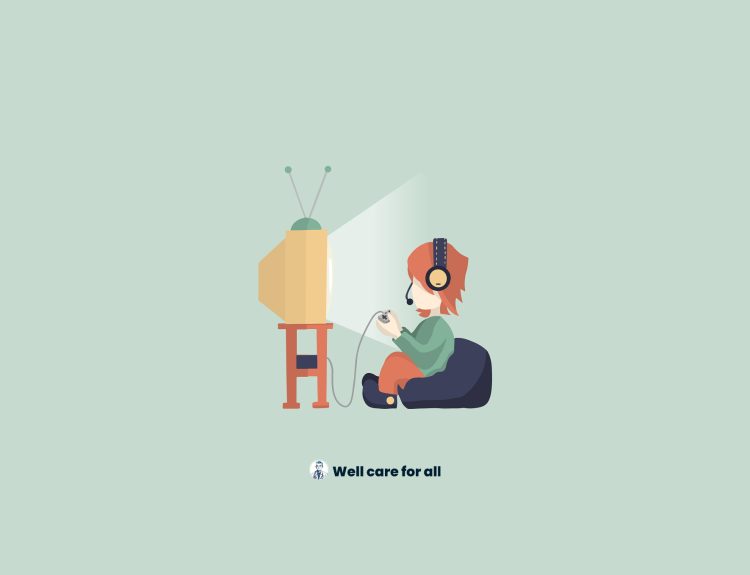
If you’re like most adults working in an office, you probably spend 8–10 hours a day sitting in front of a screen. Add commuting and evening screen time into the mix, and you’ve got a full-blown sedentary lifestyle. Unfortunately, prolonged sitting has been linked to weight gain, slower metabolism, and even chronic health conditions like heart disease and type 2 diabetes. But here’s the good news: weight loss for desk workers isn’t just possible—it’s practical. You can shed pounds without ever setting foot in a gym with the right combination of small changes in your daily routine, nutrition, and movement.
This article outlines science-backed strategies for helping desk-bound professionals lose weight, boost energy, and feel healthier while working 9 to 5.
Why Desk Jobs Make Weight Loss Harder
The average desk job promotes a sedentary lifestyle, which is a major culprit behind unwanted weight gain. When you sit for long periods:
- Your body burns fewer calories.
- Fat-burning enzymes in your muscles drop by up to 90%.
- Insulin sensitivity decreases, increasing fat storage.
- Hunger cues become less reliable, leading to mindless snacking.
A typical day might include coffee and a pastry in the morning, a sandwich at your desk for lunch, followed by an afternoon sugar fix—and before you know it, you’ve consumed more than 2,500 calories without moving much.
Desk-Friendly Strategies to Kickstart Weight Loss
Master the Art of NEAT
NEAT (Non-Exercise Activity Thermogenesis) refers to all the calories you burn doing things other than exercise—like walking to meetings, standing while on calls, or fidgeting at your desk.
Try this:
- Take a 5-minute walk every hour (set a timer).
- Stand during phone calls or meetings.
- Walk to a coworker instead of emailing.
- Use the stairs instead of the elevator.
Over a week, these small actions can burn hundreds of extra calories.
Upgrade Your Workstation
Consider a standing desk or desk bike if it’s within your budget (or your company’s). Standing for part of the day burns 30–50 more calories per hour than sitting. It also reduces back pain by improving body posture.
For bonus points:
- Use a balance board or under-desk cycle.
- Change your position between standing and sitting every 30 to 60 minutes.
Make Smarter Snack Choices
Office snacking can derail even the best intentions. That 3 PM cookie or vending machine run adds up fast.
Swap processed, high-sugar snacks for high-protein, fiber-rich alternatives:
- Almonds or mixed nuts (portion-controlled)
- Greek yogurt
- Hummus and veggie sticks
- Hard-boiled eggs
- Low-sugar protein bars
Hydration matters, too. Keep a reusable water bottle at your desk and aim for at least eight glasses daily. Sometimes, hunger is thirst in disguise.
Plan Your Meals and Stick to Them
Meal prepping doesn’t have to be complicated. Taking 1–2 hours on the weekend to prepare lunches and snacks can eliminate impulsive eating.
Simple prep ideas:
- Grilled chicken with quinoa and roasted veggies
- Salad jars with lean protein
- Whole grain wraps with turkey and avocado
When you control your portions and ingredients, weight loss becomes more manageable—even during busy work weeks.
Movement Routines You Can Do at Your Desk
You don’t need a gym to break a sweat. Desk exercises are practical and discreet. Do a few reps between meetings or while reading emails.
Seated exercises:
- Leg lifts under your desk
- Shoulder rolls and arm circles
- The calf raises while standing
Standing stretches:
- Wall push-ups
- Desk squats
- Standing side bends
Pro tip: Add a short desk yoga or stretch routine before lunch to boost blood flow and fight fatigue.
Mindfulness: Your Secret Weight Loss Weapon
Work stress often leads to emotional eating, especially when surrounded by easy-to-access snacks or celebrating office birthdays every week.
Here’s how to stay mindful:
- Eat slowly and without distractions.
- Recognize real hunger vs. stress eating.
- Practice deep breathing during high-stress periods.
You could also keep a food journal to track what, when, and why you eat. Awareness alone can significantly improve your habits.
How Sleep Affects Weight Loss—Even at Your Desk Job
Poor sleep can sabotage weight loss, especially with lengthy, inactive workdays. It can also mess with hunger hormones (ghrelin and leptin), increasing cravings for sugar and carbs.
Tips for better sleep:
- Have a consistent and regular sleep schedule (even on weekends).
- Limit caffeine after 2 PM.
- Create a wind-down routine free of screens before bed.
Sleeping 7–9 hours per night is as crucial as exercise and diet for weight loss.
FAQs About Weight Loss For Desk Workers
Q. Can I lose weight without going to the gym?
A: Yes! You can lose weight without formal workouts if you focus on caloric intake, smart movement habits, and better food choices. NEAT activities, meal planning, and walking breaks make a huge difference.
Q. How much should I move during the workday to see results?
A: Aim for at least 5–10 minutes of movement every hour. Over an 8-hour day adds up to 40–80 minutes—plenty of time to burn calories and support your metabolism.
Q. What’s the best diet for weight loss while working a desk job?
A: There’s no one-size-fits-all diet, but focus on a whole-food diet rich in lean proteins, healthy fats, and fiber. Avoid highly processed snacks and sugary drinks, which contribute to fat gain and brain fog.
Q. Can standing desks help me lose weight?
A: They can help—especially with mindful movement and a calorie-conscious diet. Standing alone won’t burn much fat but supports posture, circulation, and slight calorie burn.
Q. How long will it take to see results?
A: Most people notice slight changes within 2–4 weeks, like better energy or looser clothing. Sustainable weight loss focuses on consistency rather than quick fixes. Consider losing 1 to 2 pounds per week.
Conclusion
Weight loss for desk workers doesn’t have to be difficult, restrictive, or time-consuming. Small, consistent changes—like walking more, choosing smarter snacks, or standing during calls—often make the most significant impact over time. Creating an office environment that encourages movement, packing healthy meals, managing stress, and getting enough sleep builds momentum toward a healthier body and sharper mind—without sacrificing your career or free time.
Remember: The healthiest lifestyle fits into your real life.



